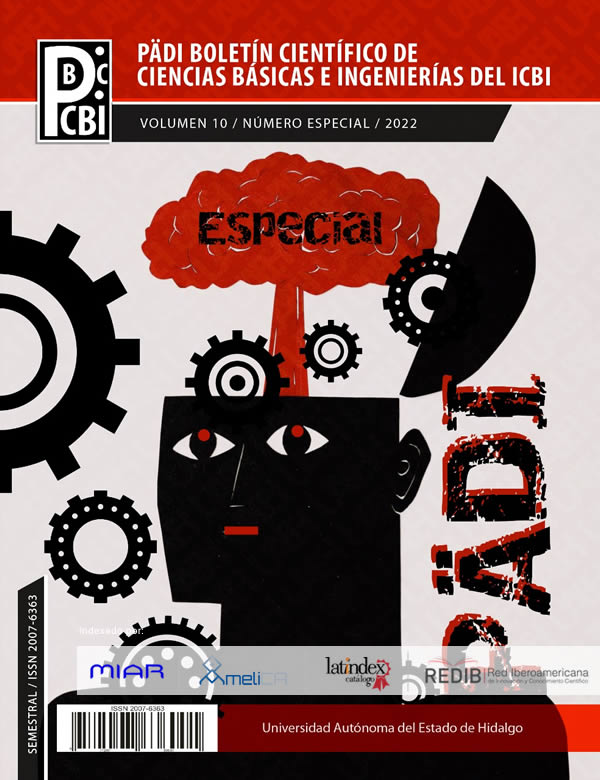Covid-19 compartmental model: detection test application coverage and response speed
DOI:
https://doi.org/10.29057/icbi.v10iEspecial.8504Keywords:
Covid19, testing, epidemiological model, SIR model, epidemic outbreakAbstract
We introduce a compartmental epidemiological model for the transmision of Covid-19 virus, which we call SEIART, including testing for symptomatic and asymptomatic people. This model is a generalization of classical models SIR, SEIR and SEIAR, and takes into account tested and nontested symptomatic infected people as well as asymptomatic tested and nontested people. We compute the basic reproductive number of the system and show it decreases as the testing rate and the application/detection rate increases for symptomatic and asymptomatic infected people. We present simulations to show that an increase in testing and greater effectiveness in application / detection tests cause a reduction in the infected population and in mortality.
Downloads
Publication Facts
Reviewer profiles N/A
Author statements
Indexed in
- Academic society
- N/A
References
Amazon, J. J., Goh, S. L., and Feigenson, G. W. (2013). Competition between line tension and curvature stabilizes modulated phase patterns on the surface of giant unilamellar vesicles: A simulation study. Phys. Rev. E., 87:022708.
Arfken, G. and Weber, H., editors (2005). Mathematical Methods for Physicists. Elsevier Academic Press.
Ball, P. (2015). Forging patterns and making waves from biology to geology: a commentary on Turing (1952) the chemical basis of morphogenesis. Phil. Trans. R. Soc. B, 370:20140218.
Brigatti, E., Nuñez-López, M., and Oliva, M. (2011). Analysis of a spatial Lotka-Volterra model with a finite range predator-prey interaction. Eur. Phys. J. B, 81:321.
Brinkmann, F., Mercker, M., Richter, T., and Marciniak-Czochra, A. (2018). Post-Turing tissue pattern formation: Advent of mechanochemistry. PLOS Computational Biology, 14:e1006259.
Capasso, V. and Wilson, R. (1997). Analysis of a reaction-diffusion system modeling man–environment–man epidemics. SIAM J. Appl. Math., 57:327– 346.
Castro-Villarreal, P., Villada-Balbuena, A., Méndez-Alcaraz, J. M., Castañeda-Priego, R., and Estrada-Jiménez, S. (2014). A brownian dynamics algorithm for colloids in curved manifolds. J. Chem. Phys., 140:214115.
Chacón-Acosta, G., Nuñez-López, M., and Pineda, I. (2020). Turing instability conditions in confined systems with an effective position-dependent diffusion coefficient. J. Chem. Phys., 152.
Chaplain, M., Ganesh, M., and Graham, I. (2001). Spatio-temporal pattern for mation on spherical surfaces: numerical simulation and application to solid tumour growth. Journal of Mathematical, 42.
Crank, J. (1980). The Mathematics of Diffusion. Oxford University Press.
do Carmo, M., editor (1976). Differential Geometry of curves and surfaces. Prentice Hall, Inc., New Jersey.
Fuselier, E. and Wright, G. (2013). A high-order kernel method for diffusion and reaction-diffusion equations on surfaces. J. Sci. Comput., 56:535.
Fuseya, Y., Katsuno, H., Behnia, K., and Kapitulnik, A. (2021). Nanoscale Turing patterns in a bismuth monolayer. Nat. Phys., 17:1031–1036.
Gatenby, R. A. and Gawlinski, E. (1996). A reaction-diffusion model of cancer invasion. Cancer Research, 56:5745–5753.
Getzin, S., Yizhaq, H., Bell, B., Erickson, T. E., Postle, A. C., Katra, I., Tzuk, O., Zelnik, Y. R., Wiegand, K., Wiegand, T., and Meron, E. (2016). Disco very of fairy circles in Australia supports self-organization theory. PNAS, 113:3551–3556.
Gierer, A. and Meinhardt, H. (1972). A theory of biological pattern formation. Kybernetik, 12:30–39.
Gjorgjieva, J. and Jacobsen, J. (2007). Turing patterns on growing spheres: the exponential case. DCDS Supplements, 2007(Special):436–445.
Krause, A. L., Burton, A. M., Fadai, N. T., and Gorder, R. A. V. (2018). Emer- gent structures in reaction-advection-diffusion systems on a sphere. Phys. Rev. E, 97:042215.
Krause, A. L., Ellis, M. A., and Gorder, R. A. V. (2019). Influence of curva- ture, growth, and anisotropy on the evolution of Turing patterns on growing manifolds. Bull. Math. Biol., 81:759–799.
León-Velasco, D. A. and Chacón-Acosta, G. (2021). Full finite element scheme for reaction-diffusion systems on embedded curved surfaces in R3. Adv. Math. Phys., page 8898484.
Liaw, S., Yang, C., Liu, R., and Hong, J. (2001). Turing model for the patterns of lady beetles. Phys. Rev. E, 64:041909.
Liu, Y. J., Zhu, L., Wang, A., and Wang, B. (2011). Dynamical behavior of an epidemic model. Braz. J. Phys., 41:304–308.
Mimar, S., Juane, M. M., Park, J., Muñuzuri, A. P., and Ghoshal, G. (2019). Turing patterns mediated by network topology in homogeneous active systems. Phys. Rev. E, 99:062303.
Murray, J. D., editor (2003). Mathematical Biology II: Spatial Models and Biomedical Applications. Third Edition, Springer-Verlag, Berlin Heidelberg.
Nampoothiri, S. (2016). Stability of patterns on thin curved surfaces. Phys. Rev. E, 94:022403.
Nuñez-López, M., Chacón-Acosta, G., and Santiago, J. A. (2017). Diffusion-driven instability on a curved surface: Spherical case revisited. Braz. J Phys, 47:231–238.
Plaza, R., Sánchez-Garduño, F., Padilla, P., Barrio, R., and Maini, P. (2004). The effect of growth and curvature on pattern formation. J. Dyn. Diff. Eqs., 16:1093.
Ramakrishnan, N., Kumar, P. S., and Radhakrishnan, R. (2014). Mesoscale computational studies of membrane bilayer remodeling by curvatureinducing proteins. Phys. Rep., 543:1–60.
Sens, P. and Turner, M. S. (2011). Microphase separation in nonequilibrium biomembranes. Phys. Rev. Lett., 106:238101.
Stoop, N., Lagrange, R., Terwagne, D., Reis, P., and Dunkel, J. (2015). Curvature-induced symmetry breaking determines elastic surface patterns. Nature Materials, 14:337–342.
S´ánchez-Garduño, F., Krause, A. L., Castillo, J. A., and Padilla, P. (2019). Turing-Hopf patterns on growing domains: the torus and the sphere. J. Theor. Biol., 481:136–150.
Turing, A. M. (1952). The chemical basis of morphogenesis. Philos. Trans. Roy. Soc., 237:37–72.
Turing, A. M. (1954). Part iii: A solution of the equations morphogenetical for the case of spherical symmetry.
van Meer, G., Voelker, D. R., and Feigenson, G. W. (2008). Membrane lipids: where they are and how they behave. Nat. Rev. Mol. Cell Biol., 9:112–124.
Vandin, G., Marenduzzo, D., Giryachev, A. B., and Orlandini, E. (2016). Correction: Curvature-driven positioning of Turing patterns in phase-separating curved membranes. Soft Matt., 12:3888–3896.
Varea, C., Arago ́n, J., and Barrio, R. (1999). Turing patterns on a sphere. Phys. Rev. E, 60:4588.
Webb, G. F. (1981). A reaction-diffusion model for a deterministic diffusive epidemic. J. Math. Anal. Appl., 84:150–161.
Zhu, L., Yuan, H., Wu, K., Wang, X., Liu, G., Sun, J., Liao, X., and Chen, X. (2021). Curvature-controlled delamination patterns of thin films on spherical substrates. iScience, 24:102616.




















